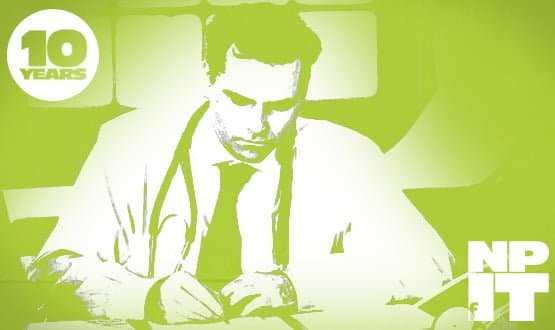What did NPfIT ever do for GPs?
- 19 June 2012

“Basically they haven’t achieved what they wanted to do and that’s great.” That is how Dr Paul Cundy sums up the impact of the National Programme for IT in the NHS on primary care.
The joint chairman of the BMA and RCGP’s joint IT committee believes NPfIT has been a complete failure; but GPs are “absolutely overjoyed” about that.
“The original national programme completely ignored GPs,” he says. “That was initially because they thought they didn’t need to concentrate on GPs. But eventually that turned out to our advantage, in that we were largely left alone.”
Infrastructure and systems
N3: Having said that, the national programme has delivered one, big thing to GPs; the new NHS network, or N3 – although there have been persistent complaints about its speed and capacity.
BT was chosen as the prime contractor for the £530m service in 2003, in a seven-year contract that was extended in 2010, enabling it to run until March next year.
The Department of Health is now working with the NHS, the Cabinet Office and the Public Services Network team to develop a future network strategy to make sure there is a network that continues to meet the needs of the NHS. At the same time, the public sector is moving towards public services networks, and the NHS will need to align with this trend.
A key foundation of the Cabinet Office’s Government ICT strategy is to create a “network of networks”, through which a range of authorities and agencies that deliver public services can share communications infrastructure and information. The government hopes this will reduce costs and increase efficiencies.
Chris Wilber, the head of NHS infrastructure at the NHS Technology Office, spoke at a Public Services Network conference in February, and said he hoped to have N3 accredited as a PSN Service Provider or Distribution Network Service Provider in May or June.
“We have to strike a reasonable balance between slotting N3 into the PSN framework and concentrating on what comes after N3. We’re starting to plan for N4 going forward,” he said.
The DH told EHI Primary Care that it was still working on this strategy, and also looking to provide Spine services in more efficient ways that utilise up-to-date approaches and technologies.
GPSoC: As Dr Cundy recalls, the first director general of NHS IT, Richard Granger, didn’t want to give GPs a choice of clinical system. Instead, all the GPs in a particular area were supposed to receive the ‘core, strategic’ system being rolled out by their local service provider.
However, GPs effectively rebelled and managed to negotiate GP Systems of Choice as part of their new, national contract with the government.
Although it was never part of the national programme, what will happen to IT support and practice systems when GPSoC expires is the big question that GPs want answered as the national programme winds down and NHS Connecting for Health, the agency that ran it, breaks up.
Dr Cundy says GPSoC will be replaced from 2013 with a refined and improved version and will be contracted by the NHS Commissioning Board.
“GPSoC has been an enormous improvement on the previous procurement contracting arrangements and I think is pretty close to being really sustainable in the long term,” he says. “If politicians dabble with that in any serious way that could cause considerable anxiety and could cause some fragmentation in what we have got working.”
National projects
The national programme also set out to involve GPs in a number of national projects. About half of all GPs are using the e-referral system Choose and Book, while the electronic prescription service had an enthusiastic take-up initially, but the roll-out of EPS R2 is moving at a glacial pace.
About half of GPs are also using the online pathways tool, Map of Medicine – a project that often gets overlooked. All of these programmes were supposed to be up, working and in universal use years ago.
Dr Cundy believes many ridiculous claims about the timing for roll out of NPfIT programmes were made because the people involved had “never actually done any of it.”
Politicians at the time did not want to hear that the timetable was wildly optimistic. “The GPs knew this because we spent the previous 20 years actually doing what they wanted us to do and they were trying to do it in 29 months,” he says now.
Choose and Book: The Department of Health awarded a contract for an electronic booking system to Atos Healthcare in October 2003.
In a press release, it confidently envisaged that: “By the end of 2005, every hospital appointment will be booked for the convenience of the patient, making it easier for patients and their GPs to choose the hospital and consultant that best meets their needs.”
For a while, it almost looked as if it might happen. When it was launched in July 2004, Choose and Book was the first nation-wide component of NPfIT to become available.
Yet it took until January 2008 for C&B to reach 50% usage for referrals, by which time around £100m had been spent on the contract. In February 2009, the DH signed a two year extension with Atos Healthcare, valued at £65m.
Usage of the e-referral system reached 57% in March 2009 and has never exceeded that high. As of March this year, usage has dropped back to 49%, with some former strategic health authority areas having usage as low as 25%.
Dr Cundy says C&B was huge in terms of the technical deployment of a system into every practice in England. “From that point of view it was reasonably successful, as they got the thing installed in a large number of practices and got smartcards working,” he says.
“The problem with C&B is that it’s a technology which is one part of a system and the system of choosing and booking doesn’t work. The software gets the blame, but it is not really the software’s fault.
“The real problem is that there is no guarantee that the patient is getting an adequate choice, because it’s the trusts that decide what to put on the system, and they only put stuff on it that they want to reveal. And when you book, you can’t be sure that you are actually booking, because the trusts step in to manage the appointments process.”
Electronic prescription service: The core EPS software, which allows practices to produce prescriptions electronically, has been operational since the end of 2004 and the first Release 1 sites went live in February 2005.
By May 2007, the softwarewas installed in around 50% of practices and that has since reached 97%. However, the roll out of EPS R2 to GPs, which allows practices to digitally sign and send a prescription to a pharmacy nominated by the patient, has been much slower.
EPS R2 was originally due for roll-out in 2007, but the first deployment at a practice and pharmacy was not until July 2009, when it went live in Leeds.
Before authorising GP practices to use EPS R2, primary care trusts must apply for approval from the health secretary. In early 2011, the DH stopped any more PCTs from applying to take part in EPS R2 because of the delay to the programme, blaming slow progress from system suppliers.
This has left 83 PCTs with the necessary approval. Only 170 general practices, out of more than 8,000, have EPS R2 capability. In comparison, more than 4,800 community pharmacy sites are ready to start using EPS R2 and 400,000 patient nominations have been set.
A DH spokesperson told EHI Primary Care it is aware of the increased interest from the NHS in re-establishing the process with regards to giving PCTs Secretary of State Directions to implement EPS R2.
“We are working with stakeholders and the NHS to understand their views on EPS R2 before a decision can be made,” it says in a statement. “We are working with PCTs that have already implemented the service to gather key learning’s and ensure these are applied to future deployments.”
Dr Cundy says EPS2 is a welcome development for GPs, but while phase one was very successful, getting rid of the paper prescription altogether is “clearly a much more complex process.”
“CfH has very correctly set about implementing this on a basis of actually proving it works rather than just rolling it out,” he says.
See tomorrow’s Insight section for an update on the summary care record programme, HealthSpace and more reflections on NPfIT’s impact on primary care.




